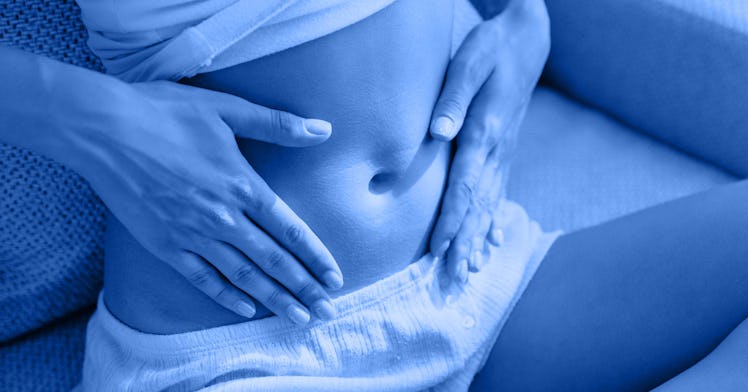The Ovulation Cycle: How to Track Your Partner’s Eggs Without Using an App
When trying to conceive, it’s important to time intercourse to ovulation. That why understanding the ovulation cycle and watching for ovulation symptoms is key.

The ovulation cycle is not as exact as some might assume. And that can make things difficult for couples trying to conceive. Because in order to be successful at making a baby, the egg has to meet sperm within 24 hours of leaving the ovary. So, it helps to have both perspective parents on board taking a stake in their fertility. But while some would just assume knowing when ovulation happens is a matter of applying simple math and marking a wall calendar, or downloading an ovulation app, it turns out ovulation is something of a moving target.
“In fact, apps can be misleading depending on the factors they take into consideration,” explains Dr. Nicola Rinaldi, fertility coach and author of No Period. Now What? A Guide to Regaining Your Cycles and Restoring Fertility. “It’s important to know that ovulation does not always occur on cycle day 14.”
Day 14 refers to the 14th day after the start of a woman’s period, the typical estimated time for ovulation. It’s pretty much right in the middle of a woman’s 28-day menstrual cycle. But again, ovulation could actually happen at day 12 or day 14, which can really throw a wrench in a couple’s plans. “So tracking your own signs and symptoms is imperative,” Rinaldi says.
And while it’s true that many of these symptoms are best recognized by the person experiencing them, there’s nothing wrong with sharing the information. But it depends largely on how open a couple is planning to be during the “procreative process.” Ovulation symptoms are intimate, true, but so is being elbow-deep in a tiny person’s poop. Better get used to bizarre body talk now.
That said, the most noticeable symptom of ovulation a woman will experience will occur in the bathroom. “There will be a change in vaginal fluid,” explains Rinaldi. “It will be like egg-white, both in terms of consistency and color, feel slippery, and if you touch the mucus on the toilet paper you will find that it stretches between your fingers.”
Rinaldi notes that this mucus occurs for three to five days prior to ovulation. That makes it an excellent marker because male sperm can swim for up to five days. Meaning if you get started with regular sex when at the sign of egg-white mucus, there’s a good chance everyone’s genetic material will meet at the right time. To add further precision to tracking, Rinaldi recommends ovulation predictor sticks. “Predictor sticks will typically be positive, showing two equally dark lines, 24 to 36 hours prior to ovulation,” she says.
Four Ovulation Symptoms
- Vaginal mucus that is the color and consistency of egg whites and stretches between fingers when touched.
- Positive readings on ovulation predictor sticks, which can indicate ovulation within up to 36 hours of ovulation.
- Adnominal ache on one side of the lower abdomen as the egg is resealed from an ovary.
- A cervix that is positioned high and farther from the vulva than normal.
Some women may also be able to feel ovulation occurring in the form of an ache in the lower abdomen. The ache will change sides depending on which ovary is releasing the egg and may last over an hour.
“Finally, you can manually check cervical position,” Rinaldi explains. A cervix that is high and hard to reach, relative to other times, could indicate fertility. Importantly, though, the method is subjective and not particularly as precise.
If all of these signs are occurring around the middle of a woman’s menstrual cycle, there’s a pretty good chance ovulation is occurring, or will occur soon. So put down the predictor sticks and light the candles.
This article was originally published on